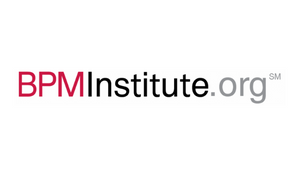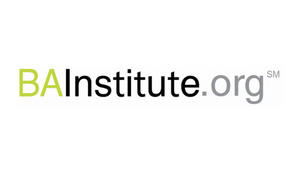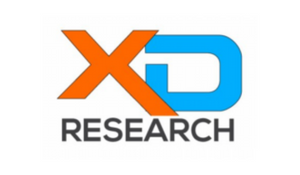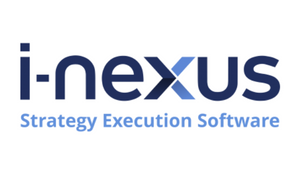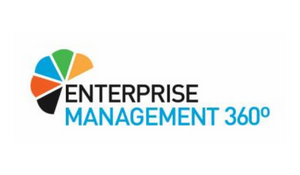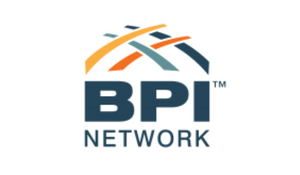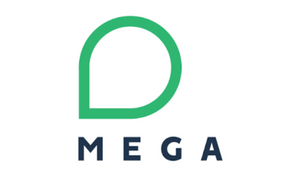

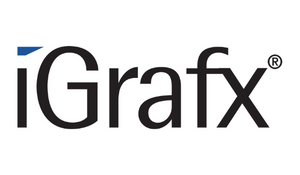

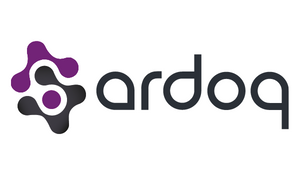
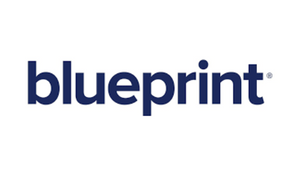
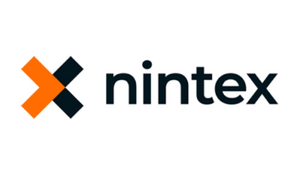
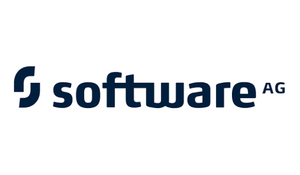
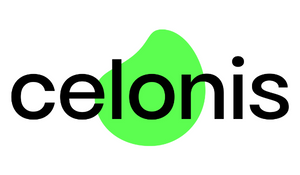
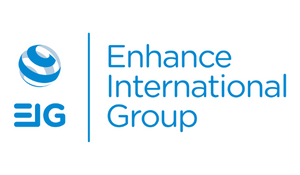

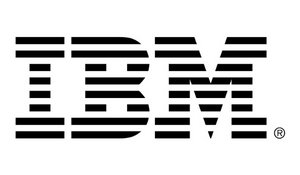
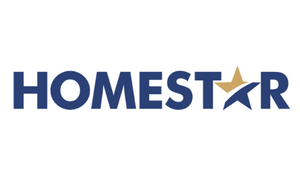
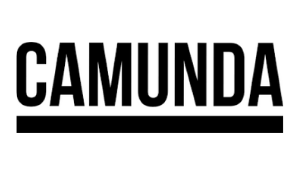
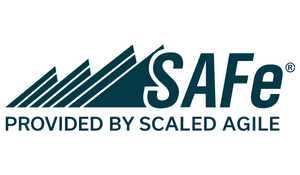
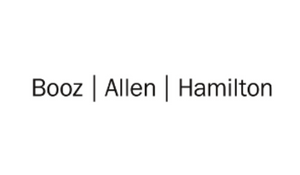
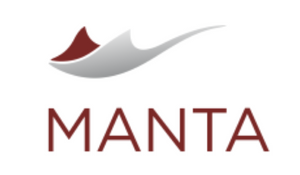

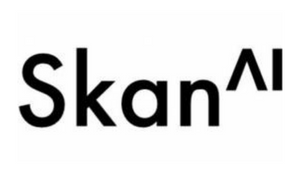

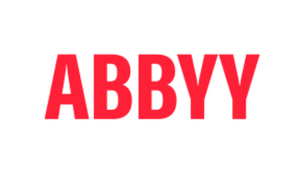

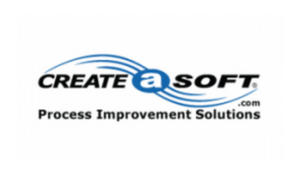
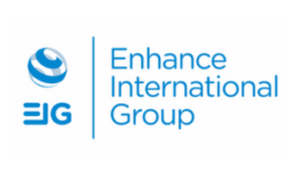
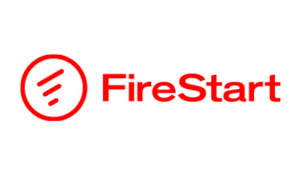

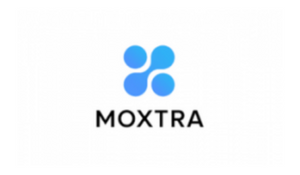
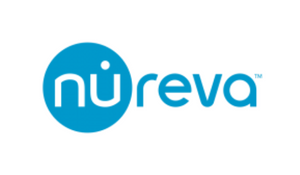
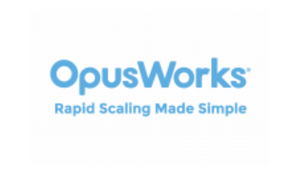
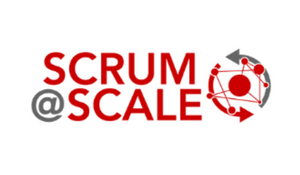
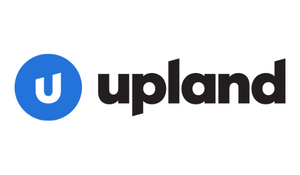
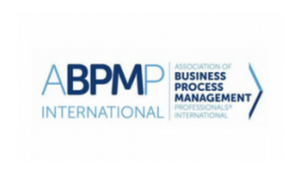
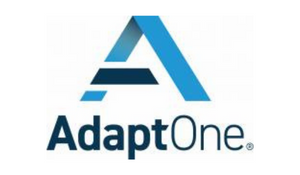
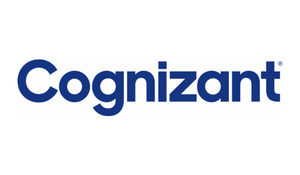
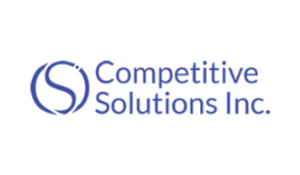


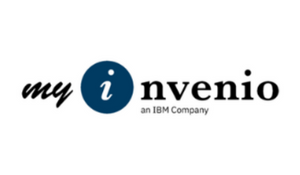
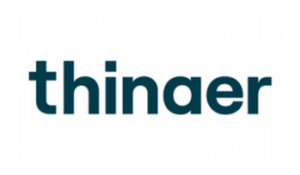
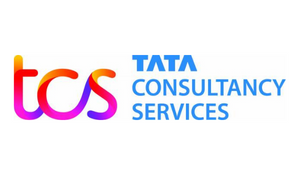
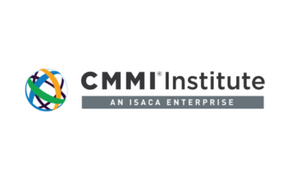

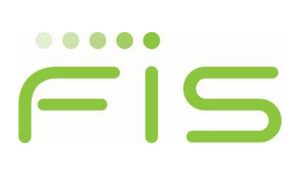
Courtesy of Mednax Health Solutions Partner's Donald Kuk, below is a transcript of his speaking session on 'Transforming Health Sciences and Health Care Into A Global Virtual Practice of Medicine' to Build a Thriving Enterprise that took place at BTOES From Home.
.png?width=250&name=Screenshot%20(91).png)

Session Information:
Transforming Health Sciences and Health Care Into A Global Virtual Practice of Medicine
This session presents the foundational technologies, approaches and results from delivering a global virtual practice of medicine through:
Session Transcript:
I want to share what a great honor it is this morning to be with all of you, to be able to share my experience in leading enterprise transformation and two, be able to share what I think is going to be the future of the industry and where we are heading with.
Automation, in every field, What I'm sharing today is a byproduct of my experience across all industries.
So I'm sharing a broad background of experience.
And I'd like to start today by talking about where I think we are as a, as a, as an organization, as a, as a global.
In brief introduction, I am Donald Cook.
My LinkedIn profile is highly visible. It's easy for all of you to join. Please, please feel free to link in with me and asked me direct questions. After the session, I'm happy to to help your companies in any way that I can.
-1.png?width=377&name=Screenshot%20(76)-1.png) I think we can always learn from today where we need to be tomorrow. We need to be much better prepared for the future. Many of our companies had no resilience planning, had little or no virtualization capability.
I think we can always learn from today where we need to be tomorrow. We need to be much better prepared for the future. Many of our companies had no resilience planning, had little or no virtualization capability.
Inadequate security in order to be able to virtualize our businesses.
And we have to recognize that tomorrow is going to bring even greater challenges. So whenever we have confronted in the last 90 days, expected, again, in our lifetime, while we hear that, it's a once in a lifetime experience, I wouldn't count on it.
I suspect that this will be the new normal.
And that the people that have been virtualized by the pandemic of colvin will likely not want to return to their desks and work from the office. So many of our employees are going to want to be virtual in the future future.
As a result, we're going to have to look at perhaps re staffing and restructuring the way our companies work and perhaps even re-engineering them based on changed, demand and the appropriate capacity, the results.
So, going forward, our resilience in crisis planning has to include documenting all of our business processes down to the individual site and process level.
Documenting our technology, our controls, and our API architectures that we have a coherent enterprise architecture that links process, technology controls, and APIs.
We have to develop standardized taxonomies where we've been on a number of virtual phone conversations and meetings, where people are using the same words and mean things that are completely different.
Because we're dealing now with a global community and a virtual context. And we lose some of the intimacy of sitting side-by-side at the meeting table and being able to chuckle and joke about the fact that we really don't understand each other, when we use the same words. For those expressions that are critical to our business success.
We have to document a taxonomy so that everyone uses a standard set of words in a standardized way and we can communicate more effectively in this new virtual community.
We have to cross train our staff and build a matrix of skills and certified capabilities so we know who can sit in what chair, in the event of a crisis.
We need to know which skills are fungible and re-usable so that we can use our staff in a more effective way.
We have to create a redundant rollover capability with multiple locations that may be located away from the epicenter of where these crises occur.
All of us are observing how difficult life has been in New York City.
New York City has become the epicenter for this global crisis and for the infection rate of coven.
It's also the worlds, headquarters and the World Financial Center for many of the world's banks and I can say with great pride That because of the planning and preparation that I did at B N Y. Mellon is the Chief Architect.
We moved a redundant rollovers site up into upstate New York in a risk and in New York The location of which will not be revealed here today.
But it is a redundant location with a 100% rollover capability that instantaneously rolls over in the event of a pandemic or a crisis or an emergency.
So there's no interruption in the world's central bank to the world's central banks.
Finally, life is a team sport, and our teamwork is critical. We have to learn how to behave better as team members.
We have to think of each other as brothers and sisters. We need to find a way to love and respect one another.
We're dealing with some fairly weighty issues on a global scale that I think could easily be managed if we have enough compassion to treat the people that we are exposed to in our lives as true brothers, sisters, and members of the family of humanity.
Let's talk today about the key elements of automation, how I perceive them, and how we bring them together. This is just a general overview, and then I'll go into the specifics of healthcare.
We begin with RPA, the ability to create digital workers out of a computer to do highly repetitive tasks.
At B N Y Mellon we installed a prototype of about 20 bots early on in the company's journey into robotics.
And those bots were so successful to manage transactions that we expanded that community to about 250 bots.
Those bots today are processing 99.6% of the banks' transactions, 160,000 transactions a day.
It's a global banks were operating july 24th seven, largely follow the sun but we operate 24 7.
Transacting $2000 billion.
Every 24 hours and transactions, that's more than $20 million a second in 170 countries in 140 languages in 125 different currencies.
Those bots are language agnostic and they're even orientation agnostics. So if the documents are presented in one orientation or another and the digitized content is reading right to left or left to right, it doesn't matter.
The bots have become very smart, and most recently, we ran the the coverage up to about 98% with that first population.
Then we designed a set of bots that gap analyzed what wasn't being covered by the 98%, so what wasn't being done with the 2%. Then designed the bots, designed the next set of bots to provide coverage for that last 2% that wasn't being managed effectively by the first set of bots.
Of course, we have machine language, and the ability to use.
The computer to read and develop its own intelligence over a period of time. The machine is getting smarter every time it runs the process, It's getting smarter by the day.
As we build out this capability, the machine vision adds inspection capability for high precision tasks.
We want to do real-time, dynamic, behavioral modeling for our customers and clients. All of us want to be treated with respect. If we remember the previous page, all of us want to be treated with profound respect, his customers, and when we our call center, cause our customers at eight o'clock in the morning, to sell them insurance as an example in Petah Tikva Israel, the Customer contact center, for AIG, reaches out to all of the Yiddish speaking customers around the world, and manages the global pipeline of Yiddish speaking Hebrew customers.
That customer base wants to be contacted optimally at a specific time of the day. If we call the same set of customers at eight o'clock in the morning, the psalter is about 14%.
Call those same customers back at 230 in the afternoon. The sulfur is 91%, we have a 6 to 1 advantage by just reaching out to the customer when they want to be reached.
In the same way, we analyze the behavior of the patients and the medical practice in every demographic, and every medical practice, to find the gaps, when we expect people not to keep their appointments, and overbook and over schedule the schedule in order to optimize the productivity for the physicians.
Of course, business process management has been around for a long time.
But if we add a layer of artificial intelligence, the business process management provides the capability of looking at every task in the patient care pipeline, and they hit in the case of healthcare. In the case of pharmaceuticals, the production of pharmaceuticals, Every task, whether it's being produced by a machine, a robot or a human being, is mapped. So, we can see the end to end pipeline through the use of artificial intelligence. We're doing real-time demand and capacity modeling and planning for the staff, the automation, the maintenance schedules, on the infrastructure, and the equipment, the tooling, all of it.
It's amazing technology.
The language Agnostic Text analysis allows us to read medical records using RPA for things like tissue donation when people as their last greatest gift to humankind donate their body to science for re-use.
That tissue re-use has to be examined and scrutinized very carefully.
So that we don't transmit potential diseases are maladies, that the donor had, perhaps, that took the donor's life, and give them to someone else. So the RPA reads the medical histories, and looks to be sure that we have complete information about every patient and every donor.
Finally, this one is brand new, I'm announcing it here, today.
It's very powerful, I'm using it all over the world, and I want you to be aware.
We're using radio frequency technology, a technology, that was originally designed for RFID, finished goods location, where we put a tag on something, And we look in a warehouse, and it tells us that it's here.
We're now using it to track active movement of goods, services, and patient care. So if we put an RFID bracelet on patients when they walk into the emergency room, we can provide proper patient spacing for coven management.
And we also know that the patient got lost on their way to the pharmacy, or on the way to radiology, because they didn't show up for their scheduled appointment. They're in the building somewhere. We can now track their whereabouts. Send them an e-mail message and tell them that they missed their appointment. But would they please move to the right department? Very powerful technology, I'll show it to you later. I'm going to try to show you a factory that's running in Dublin, Ireland, on my cell phone.
This is the presentation that we're going to be presenting at the World Health Organization Summit.
And I'm hoping that it develops and sparks some new ideas for all of you. We're calling it a guide to the Medical Office of the Future. I provided a very similar overview at Davos 2020.
one of the current realities that we're facing as a byproduct of the Affordable Care Act is the post, the deployment of the Affordable Care Act.
The life expectancy for every American for the first time in 50 years, the rate of growth of life expectancy has actually declined by about 2.1 years.
This is a tragic outcome.
The goal of the ACA was to provide health care, to a broadened group of under served patients within the United States.
But if we look at that growth curve, those patients were in the CDC's statistic every year since 19 67.
So however, we served them good or bad, they were in that population. But once we transfer the weighty burden of servicing, uninsured patients, many of whom have preexisting diseases of self.
Infliction, lung cancer from cigarette, smoking, cirrhosis, and cancer of the liver, and pancreas, from excessive alcohol consumption, drug abuse, unmanaged drug abuse.
Those have a dramatic impact on the cost of health care for every American.
And as a byproduct, for the first time in 50 years, life expectancy has actually declined Because those people that are paying for their health care coverage can no longer afford to use it.
They're showing up in their diseases with more latent outcomes, as a byproduct of the growth of the disease.
And the fact that we didn't treat it soon enough, because they can't afford to be seen, they show up late to the doctor, Their diseases are more advanced. We can't treat them, and we're losing life as Americans. So we have to find a way of being more efficient.
When we talk about intelligent healthcare.
When we talk about intelligent healthcare and intelligent automation, we want to use the tools and methods in a new way.
We need to be innovative to respect the practice of medicine, and many of you may know that I managed emergency medicine at Wright. Patterson Air Force Base. I attended and graduated from the U S Air Forces Medical School.
And as a medical professional, having provided direct hands-on health care, My specialties are surgical closure, cosmetic, closure, fracture, dislocation and reduction in the kinds of things you would expect in a trauma center.
.png?width=742&name=Screenshot%20(4).png) one of the things that I learned early in changing the healthcare and medical practices that when we tried to transform an enterprise in the healthcare sector, we have to communicate in the language of the science. I saw the same thing at AIG, when I transformed the law practice at AIG and done and delivered $2 billion in clawback.
one of the things that I learned early in changing the healthcare and medical practices that when we tried to transform an enterprise in the healthcare sector, we have to communicate in the language of the science. I saw the same thing at AIG, when I transformed the law practice at AIG and done and delivered $2 billion in clawback.
By redesigning the way we practice law, the same was true in medicine when I spoke to 600 medical directors in a large conference room in Orlando, Florida.
They stared at me and looked like as though I was speaking a foreign language, when I talked about key performance indicators and ..., they rolled their eyes and they were like, gosh, I don't get it.
When I talked about vital signs, which is the measure of health that the doctor uses to determine how much health care we need to provide in an emergency, is this patient likely to survive?
And I combined it with business expressions. The business, vital signs. They all got it.
They jumped on it. And suddenly, they were enthusiastic about the idea that I was respecting their language, their profession, and speaking in their mind.
We want to apply the advanced client and behavioral analysis to determine when patients are likely to be seen and not, and also find out which physicians are the most capable of providing care in every practice, every specialty and every procedure. So by base lining a national care of medicine in pediatrics, anesthesiology, radiology, and neonatology. We determine who is best at everything and then teach and transfer those best practices.
It should not be a surprise to any of you that the most productive physicians in the practice, that we're seeing, 42 patients a day, had the best health care outcomes.
So, speed of delivery was not a factor in quality.
By being extremely conscientious for everything that was done every day with every patient, those physicians were delivering a better care.
So this is very important for us to consider going forward, Baseline your physicians and your health care professionals to determine who's best at everything that we do.
Then we virtualize and co-located operational teams to maximize our resilience. We talked about that earlier. Fortunately, we did this several years ago, so the practice as well Prepared for the Future and well prepared for the pandemic.
Apply business process management.
As a mechanism to virtualize the healthcare and the practice, all the way to the handheld device, which includes, by the way, vibrating the cell phone in the physician's pocket as a pacing device to tell the physician to move on to the next patient when the procedure should be complete.
Use IBM Watson as a screening and sorting tool, Create a virtual practice of radiology where every images first sent to IBM Watson, IBM Watson reads the image, looks for all possible anomalies and then distributes the images to the very best physicians in practice anywhere in the country.
This is really important for the future of health care, because we have diseases like coronavirus, like diseases in, in Africa and South Africa, where we don't want to send the world's foremost authority.
And the one person in the world that may be capable of solving the crisis into the midst of the illness. To try to treat those patients. If we can do the diagnoses remotely and treat those patients virtually, we improve everyone's survivability. That's going to be important for the future of medicine, telemedicine is on the horizon.
It's a reality we're using it today, in order to respond to the covert crisis.
Then finally, we talked about having radiologists, practicing medicine all over the country. All of you may be aware that doctors are licensed and credentialed to practice medicine in the local area.
So if a doctor is practicing medicine in New York, unless they're licensed and credentialed in Chicago, Illinois, they can't treat patients in Illinois. They can only treat patients in New York.
So we licensed and credentialed all of our physicians in all 50 states and Puerto Rico. Now, what does that mean? Every state is different. Their licensing and credentialing requirements are different.
but by aggregating all of those demands into a common platform and a common form structure, using a combination of RPA and zero defect processing, we were able to take that licensing and credentialing time from 69 plus days, on average for every single doctor in every single state.
two less than nine days. This has a huge impact.
It represents hundreds of millions of dollars in temporary position.
Compensation, recovery, by not having to hire tempts, to provide healthcare. When physicians leave a local practice, we're able to cover the practice with other physicians and bring pay doctors online in less than two weeks.
We talked about artificial intelligence, being the hub of everything.
This is a great example, and it's a great visualization, I want you to see it, And I want you to be aware of it.
What this shows is that we are linking them our RPA, which is reading medical records, and making sure that we understand whether or not in a lengthy medical history of thought of hundreds and thousands of pages, whether or not there are any expressions that represent concern for the physician.
And we can also look at the medicine that has been prescribed for that patient. And even the infused infusion chemistry that we used for chemotherapy and other things, we can read remotely using RPA.
We link that with machine vision to do things like inspection of the human skin, Artificial intelligence.
RF technology, to provide location management of wherever the patient needs to be, to provide the care and the health care. And in the case of pharmaceuticals, how we're making medical device is how we are making human skin for human transplant. Every step of every touchpoint of every process is now being man and monitored using RF technology.
This is powerful stuff, speech synthesis, supplier capacity, the process and tech architecture's. We've talked about those before the API and data Architecture's user tiered access.
To all of that information, the infrastructure data, about how to use the facility, what, what of the staff is available at what time, and how they are trained and cross train, the equipment data for uptime and scheduled maintenance. How do we schedule the maintenance in such a way that it doesn't affect production? All of that goes into our artificial intelligence layer.
This is a great example.
We are making masks for Coville 19 protection for all of our people.
And this gives us an opportunity to compare productivity of 61 different operators, cutting fabric to make masks. And what we find is that they don't have similar productivity, even though they were trained at the same time in the same class using the same standards.
They don't have the same results and outcomes. If we look at operator number one, at the low end, that, that individual is producing only about 770 square centimeters of usable fabric out of a large panel, where operator, number 61 is consistently delivering almost 1900 square centimeters. That's a 2.3, 4 to 1 variants end to end.
And, by understanding that variance and mapping the difference and using machine vision to now do the inspection and the cutting patterning, we improved productivity 65%, 65%. It's huge.
It means that we only need 534 pieces of fabric to produce over one million square centimeters of masks.
Intelligent radio frequency technology. This is a new one for everyone and is very powerful technology.
This gives us the opportunity.
To view the movement of every step of every process without having to have operators enter data into S AP or into R business management platform.
The reason this is important is that in surgery, I don't want anyone touching anything they're sterols, they're scrubbed my physicians.
My anesthesiologists, my nurses and nurse, and surgical assistance are all scrubbed in gloved and to go and have to hit a computer to enter data about patient outcomes. And mid procedure.
Specifics is, is incapacitating for the process. It arrest the process in the same way when we're doing sterile procedures for making pharmaceuticals. We don't want people touching anything, and in some areas where we're mixing chemistries, the chemistry is so volatile and so hazardous that we can't have human beings in the same room where the chemistry is being mixed.
But if we tag everything with these very small RFID tags, they're costing us on average of about 10 to 12% apiece at the high-end. If we want a very large area antenna that gives us maximum read range, they might be 18% apiece.
They're made out of Teflon. They're sterile there, washable, so we can put them on medical records that go right into surgery. We can put them on consumables that go into surgery. We can put them on the wristband for the patients so that we know which patient is in surgery, and we can properly do real-time billing and inventory replenishment, based on the consumption of materials in surgery.
This is a very powerful technology for the healthcare industry, and frankly will work equally effectively, if we start tagging aircraft engine parts or things like military ammunitions, I don't want to be in the room where people are counting grenades.
But if I put an RFID tag on them, I can send them through a pipeline, inventoried them and watch their movement and track everywhere they go every time they move.
Very powerful technology. It's brand new. Anyone that wants to know more about it. I'm happy to share it.
This is an example of what the business Process map looks like.
These are all of the tasks for an end to end business process, and when we link the Artificial intelligence business process management, this gives us the mechanism by which we can track the performance of the movement of all of the goods and services through our pipeline. It's very powerful technology.
It tells us whether or not we are within standard for everything that we do. So it's extremely powerful, capable technology. It's running on my cell phone, by the way. Because my camera is turned off in order for you to be able to see the detail in all of these charts.
Because I have lots of detail and all of the content of the charts, I won't be able to show you, but trust me, I can run this factory on my cell phone and observe its behavior, the control's efficacy, The quality in real time of the production, and whether or not we're operating within Standard for every single step of every single process. Whether it's automated or not, if it's RPA, if it's machine vision, if it's a human operator, we can see in real time everything in the company.
So while some companies are struggling to virtualize meetings, just to get six people, to talk together, to have a meeting, we've already virtualized entire enterprises' not only to the desktop, to the handheld device.
So while I'm standing buying groceries so that I can be living and working out of the home during the midst of this kovac crisis, I'm observing the behavior of the process and all of my production on my cell phone, and it rings in my pocket, if we go out of standards who I know, to go look at the process and find out what is no longer with standard.
This is the method that we apply. It's fairly detailed. There's a lot of content here, and I don't intend to go through it. It will be available on the website, and all of you can look at the website and rerun the video, and stop on this page, and take a look at it. But, this is how we do, integrated automation and process transformation. We no longer have time to run the double helix like loop of process transformation, OpEx, and automation transformation.
Digital transformation and process have to change at the same time.
The old paradigm of the apex teams that came in and they fine tuned the process and they made incremental improvements in an end to end pipeline, and then came back and redesign the technology to fix the technology that they just broke.
When they optimize the process, the apps, operations is a nightmare because we never stop that dance of fixing the technology and fixing the process until we do them simultaneously.
We don't get to the finish line at the same time.
This is the method and the process that I applied to do them simultaneously, and I've been doing simultaneous process and technology, transformation for the world's largest enterprises for the last 20 years and I'm happy to share all of these methods I have frameworks for every step in this process that I'm happy to share with all of you if it would be of interest.
Finally, I'd like to acknowledge that over a period of time, I've been fortunate and blessed to be mentored and to have had the opportunity to work for some of the most amazing people in the world.
I studied statistics under doctor Deming, Edmund Fitzgerald, Yes, the Edmund Fitzgerald of the Shipping Fame, the Edmund Fitzgerald that went to the bottom of Lake Superior. This is Edmund Fitzgerald, the son who was the President of Northern Telecom.
Jack Welch, Sandy Warner, who is the President of JP Morgan. Jamie Diamond, the Ben ..., the president of AIG. These are brilliant and gifted people.
Tony Curtis, who has become a best friend, was President of CPC.
These are brilliant and capable people, and, I have been the recipient of, the best of their leadership and mentorship.
So, I want to thank all of my mentors and all of the amazing people that have been in my life, and provided such tremendous support to me over my lifetime. In order to.
Bring me to this level of skill, incapability, it didn't come, I didn't get it all at the University of Michigan Eyestone while there. I didn't get it at the University of the Air Force Medical School, although I studied there as well.
It really came more from the hands-on work that I did within the industry and the mentorship that I received from these amazing people. So let me see. I think I've got my camera running. So if you can see the camera, I'm going to try to turn on their multiple levels of authentication. So it's going to take me a second to turn on my factory.
This is a factory running in Dublin, Ireland, that's running with this automation.
I hope that all of you can see this factory running.
Those are process steps and tasks running through this production pipeline, and I'm observing it from Albany, New York, and wherever you are. Our our guest in Johannesburg is now aware that one of my processes has gone out of control, has turned red because it's no longer within standard, and has gone out of control in Ireland.
So we've got people online today, that are working with us, in this arena, that are participate on this. Here is a problem. I think your camera. And that it's not training. So if you want to describe, we're talk about it, that's OK. But your camera is not showing through, it may be a bandwidth issue at that point. So if you can just describe or talk about something else, there'll be ideal.
Sure. Let me see if I can stop sharing my screen if that helps.
Yeah, I can see you now.
It's a little bit fuzzy, but I can see you now, OK. Let's see if.
Can you see it now?
It's a little bit fuzzy, but yes, we can we can see us. So go ahead and describe what you're showing show us. What we have is a business process map.
This is an artificial intelligence layer.
A business process map that's running in the background that shows us production on a global scale and allows us to observe the productivity of every operator and every machine and every task and every step on a global basis.
So we have virtualize the, the management of the business, all the way to the handheld device.
I'm hoping that was interesting and instructive. Are there any questions that I know this is a little bit like drinking from a fire hose because I've introduced a brand new technology with RF AI, RF Technology as a hands off business process management tool. And I've integrated a number of tools that heretofore were not used to together in order to optimize the practice of medicine. Are there any questions in, and?
..., do you have any questions from the audience that people might be interested in?
We do it on Windows, so lots of very interesting questions and as that, as Donna and I continue the discussion here, please keep, you know, providing your questions, and I'll relay them to Dawn. Let me pick one here from the audience just to get us started, Right from the beginning here.
We have, there's some questions about you, sharing some, some of your materials. And yeah, I think you already talked about that. That you're going to be sharing some of those materials.
And very far, the very first question that came up was from Rural Land about teaster. And he asked, what is the right and best criteria to identify the processes to be done by RPA, the processes that you may be focusing our RPA on? What are your thoughts on that?
Really great question.
RPA operates best where we have high repeatability, where the computer can do the same task, over, and over, and over again.
And they're the kinds of tasks that human operators, our employees, don't mind giving up, there, the things that people complain about and say, boy, you know, all I do all day long is fill out the same form, and I do it a thousand times a day.
There are highly redundant tasks that the computer can produce with much higher accuracies, then the human being's, essentially 100% accuracy.
So there are tend to be highly redundant task, highly repetitive tasks, and tasks that are not well liked by the employees. We streamline them and the the bots actually work much more efficiently. They get smarter by the day. They don't ask for breaks. They don't smoke cigarettes.
They don't walk away for lunch. And they don't ask to go back on sabbatical, they go back to school, to learn more, they're actually learning every time they execute the process.
Great question.
Very good, very good. There are a lot of additional questions about the stages of maturity, of RPA, of intelligent automation. Tell us a little bit, you have such a diverse background. You have, you have gone cross industry with these implementations.
What is your assessment of the level of maturity of the technologists today across industries that you work with? How would you rank or rate the level of maturity that we have on those applications today?
The level of maturity, great question, the level of maturity of the RPA depends really on the practitioner.
For those of us that have done this, we, now, I'm in my 10th and 12th implementation. This becomes much more routine, and it's and it's easier and faster to do the deployment with speed and precision.
Some of it depends on the maturity, the cultural maturity of the company and the industry that we serve.
So if we're serving an industry that has a legacy is very conservative, is not very does not welcome risk, is risk averse, and certainly health care, finance, financial services. Banking, investment services are that way they tend to be risk averse. The deployment of the technology tends not to be quite so aggressive.
one can imagine in the case of BN why Melon Central Bank to the world's central banks looking at that transaction volume $20 million a second.
Human beings can't read that fast.
There's no way the human beings could keep up with that transaction volume.
So bye, automating these tasks.
We're actually delivering a highly valued service to the community, and it depends more on the maturity of the company that we serve and the cultural maturity and their readiness for change.
Then the maturity of the technology, the maturity of the technology today is reading x-ray images at IBM Watson and parsing out the images to the very best physician in country based on quality of care and results. So the technology is very mature, and it's getting smarter by the day.
So if we send a, an image of a of an older woman that falls off of a bicycle or falls down the stairs and she fractures the distal aspect of the right clavicle right here, the A C joined up here has a fracture a degenerative fracture.
IBM Watson not only sees that fracture and sends it to the best physician who's in Spokane, Washington but it noticed that she had an enlarged thyroid that no one had been looking for.
And she was asymptomatic for instance, that image to the best physician who's in San, San Antonio, Texas, and we get both reads back in NaN.
So, before the patient gets up from the table, we have diagnoses from the two finest physicians in the country, in terms of medical results and that those maladies in those issues.
So, the technology is very capable. We just have to marry it up with the culture, and the company that's ready to receive a great question.
Are there others?
She'll say, Hey, are there other questions?
Yeah, I apologize. I had my microphone turned off. You have done, thank you again, thank you for sharing all your wisdom and knowledge with us today, but I have to ask a question. Related to leadership, you have had an incredible career across so many different industries, and you have worked with some amazing global leaders, including doctor Deming, doctor Michael Harry, Jack Welsh, Jane ..., John Swainson, Bob ..., and a long list of amazing, amazing leaders that you had, you had had access to it.
Who are these leaders, and you learn the most from, and why?
Wow, that's a, yeah.
That's a powerful question, because every one of these people have been so gifted and so free with their kindness and support and mentorship with me, that it's very, very difficult for me to find, if you will, a favorite or someone that was perhaps more influential than others.
But if I, if I look back on my life's experience and what gave me grounding to be able to sit with mister Welch, who was had a very short fuse, and was very demanding, and wanted an answer, if you couldn't give an answer in the first NaN, you would run out of time.
Jamie Diamond, perhaps the most brilliant mind, in all of banking, Doug Showmen. Best hands down, best regulatory, best compliance, best customer experience officer in the in the world. These are brilliant, brilliant minds.
Probably be my father, and probably because, from the time that I sat on my father's knee, until the time that we said goodbye, I learned so much about my life's journey and life's experience.
My father would tell me that he remembered that Henry Ford said, that if you think you can or that you can't, you're always right.
And I never forgot it.
I never forgot it, And I've had people ask me, and they've done, People spend a lifetime getting enough skill and enough experience to provide leadership in banking alone.
Just to manage regulatory issues in banking that to become a subject matter expert to design banking systems, and the architecture for the bank, ought to be a lifetime achievement. And that alone would be a standalone achievement working for Jack Welch across all of his businesses and managing that pipeline of transformation initiatives. AIG, the world's biggest insurance companies, Bob Venmo Chez Brilliant gifted man.
But I think it's probably my dad, because he gave me such good grounding.
And, if I reflect on my life experience, it's probably that I believed in every moment That no matter who I was sitting with and no matter how difficult the training and mentorship, I always believed that I could.
And I would trust all of you to take that away, use it as a takeaway for today's events, Understand that you can, and you will transform your companies, your lives, and this world, that we live in a little bit, a little Hovel, go a very long way!
Thank you so much.
Great question.
Don, I'll have one final, quick question and answer here, is that, In the next 10 years, will probably going to experience more technological change in our life, and the work that we have experienced in our last 50 years combined.
Absolutely.
What practical advice, if you can, if you can be, give us a short, practical advice for all, for all the participants in the conference, that, for them, technologists who are with us, and business leaders, who are with us, what is your best advice for, for them? And implementing this changes in organizations effectively going forward.
Great question.
Because of the rate of change, which has been tremendous, and certainly responding to the covert 19 post, Corbet 19 environment, we're going to be transforming every country and every company in the world.
And I am speaking at the United Nations, on September, the 14th. So, this is a topic that is getting everyone's attention. How do we transform the world? How do we transform nations'? How do we transform our companies and our institutions and our government institutions?
Every morning, when I wake up, I pray that God will transform me, that I can be the person that can help to change the world.
And that, through my willingness to change myself, to be flexible for change, and to be the instrument of change. That I can deliver that transformation every day for every person that is involved in my life. And I will share anything, with all of you that I have ever learned.
So, if any of you want support, background interests, additional content, frameworks, tools, I have over 200 analytical tools in the box, just please reach out to me on LinkedIn or through the Internet, I'm happy to, I help you in any way that I can.
Donald, a real privilege, and honor personal honor for me to have you here, and, and Lauren continue to learn so much from you. Thank you very much, and on behalf of everybody who's attending this, congratulations on all that you have done and continue to do for all of us, thank you so much for sharing your wisdom with us today.
Thank you so much, Just say thank you, the audience, Thank all of you for your kind, questions and attention.
Thank you.
Thank you, ladies and Gentlemen. We'll be ending the session now, and the next session we started at the top of the hour. Please go back to any of your reminder e-mails received directly from customer care at the goto webinar dot com, for this conference, and click the Join Webinar link to rejoin the next session. We look forward to seeing you will. really launch the next session, five minutes before the hour finally. Your feedback is very important to us. When I close the session, there will be a short survey that will pop up. And if you couldn't take a minute or two to just fill out that survey, provide any feedback, we really appreciate that. Thank you, everybody, for joining us on the first session, and hope to see you soon in our second session.

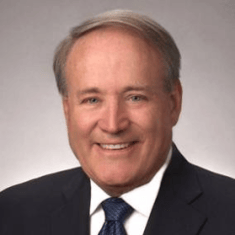 Donald Kuk,
Donald Kuk,
Chief Transformation Officer,
Mednax Health Solutions Partner.
Donald Kuk is an innovative, multiple industry award winning Global Transformation, Cognitive Automation and Operational Excellence Senior Executive with 20 plus years of delivering record setting top line growth, customer and employee satisfaction, and margin improvement leading rapid Enterprise Transformation and Intelligent Automation for the world’s most highly regarded manufacturing, retail and central banking, insurance, technology, health care and health sciences industry leaders. Widely published successes include advanced metrics, analysis, strategy, mission, vision, opportunity identification, milestones, budget and roadmap development, multi-tiered communication, transformation and improvement program management, training, change and performance management, and results verification. Named the “Enterprise Whisperer” by Fortune Magazine, Donald is a frequent invited Conference Chairperson, Keynote Speaker, Session Chairman and Tutorial Presenter at CEO, CFO, CIO, CTO, Operational Excellence and Enterprise Strategy events worldwide.

View our schedule of industry leading free to attend virtual conferences. Each a premier gathering of industry thought leaders and experts sharing key solutions to current challenges.
View Schedule of EventsWelcome to BTOES Insights, the content portal for Business Transformation & Operational Excellence opinions, reports & news.
-------------------------------------------------------
Search for anything
Insights from the most progressive thought leaders delivered to your inbox.
Insights from the world's foremost thought leaders delivered to your inbox.
Being a hero is all about creating value for others. Please invite up to 5 people in your network to attend this premier virtual conference, and they will receive an invitation to attend.
If it’s easier for you, please enter your email address below, and click the button, and we will send you the invitation email that you can forward to relevant people in your network.
View our schedule of industry leading free to attend virtual conferences. Each a premier gathering of industry thought leaders and experts sharing key solutions to current challenges.
View Schedule of EventsWatch On-Demand Recording - Access all sessions from progressive thought leaders free of charge from our industry leading virtual conferences.
Watch On-Demand Recordings For FreeDelivered by the industry's most progressive thought leaders from the world's top brands. Start learning today!
View All Courses NowThe premier Business Transformation & Operational Excellence Conference. Watch sessions on-demand for free. Use code: BFH1120
Watch On-DemandInsights from the most progressive thought leaders delivered to your inbox.
Insights from the world's foremost thought leaders delivered to your inbox.
Being a hero is all about creating value for others. Please invite up to 5 people in your network to also access our newsletter. They will receive an invitation and an option to subscribe.
If it’s easier for you, please enter your email address below, and click the button, and we will send you the invitation email that you can forward to relevant people in your network.
Courtesy of Nintex Pty's Paul Hsu, below is a transcript of his speaking session on 'Improve employee productivity during and post-COVID by ...
Read this article about HP, Best Achievement in Operational Excellence to deliver Digital Transformation, selected by the independent judging panel, ...
Read this article about BMO Financial Group, one of our finalists, in the category Best Achievement in Operational Excellence to deliver Digital ...
Read this article about Cisco, one of our finalists, in the category Best Achievement of Operational Excellence in Internet, Education, Media & ...


